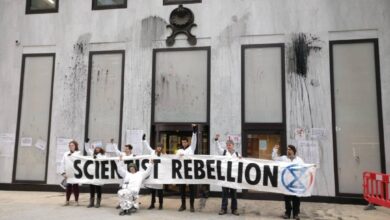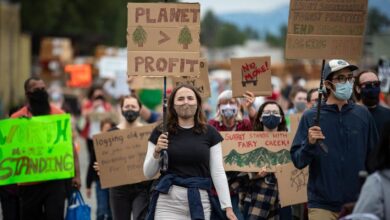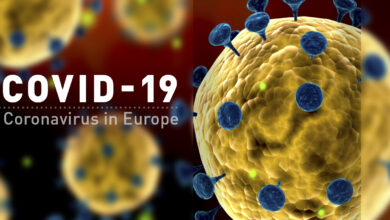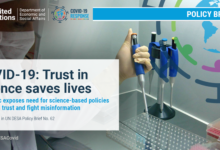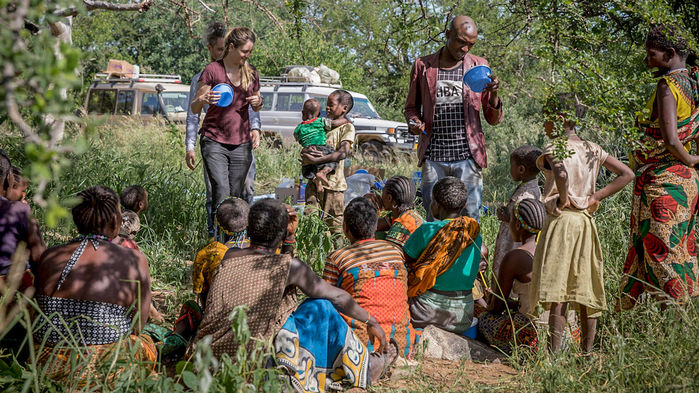
Whether in villages on the coast of Ghana or in the mountains of Rwanda, asking for people’s poop is a good icebreaker, Mathieu Groussin says. “Everybody laughs,” says Groussin, a microbiologist at the Massachusetts Institute of Technology (MIT) in Cambridge. “Especially when we stress that we need the whole fecal sample and show them the big bowl.”
He’s asking on behalf of the Global Microbiome Conservancy (GMC), an effort to identify and preserve gut bacteria from different peoples around the world. Most microbiome research has focused on Western, urban populations, which typically eat processed foods and use antibiotics. The few studies of traditional peoples have found a far more diverse gut microbiome that appears to be linked to the absence of certain diseases.
But as traditional societies change their lifestyles, that biodiversity is under threat, says Eric Alm, an MIT microbiologist who co-founded GMC in 2016 with Groussin and two other MIT postdocs. “Strains that coevolved with humans are currently disappearing,” he says. Later this month, Groussin plans to expand the growing conservatory with samples from Nigerian communities affected by oil pollution near the Niger River delta.
Rescuing and preserving the microbes, Alm says, could pave the way for new treatments not just for gut ailments, but for other disorders linked to the microbiome—such as asthma, allergy, obesity, and diabetes. “I’m 100% confident that there are relevant medical applications for hundreds of strains we’ve screened and characterized,” he says.
Gathering material from human subjects and importing it to the United States for posterity raises ethical and legal complications, however. And the project itself represents a pessimistic outlook, says Stephanie Schnorr, a biological anthropologist at the University of Nevada in Las Vegas who has studied the microbiome of the Hadza, a traditional people in Tanzania. “Keeping a biobank is already expecting that diversity loss is an inevitable process,” she says.
GMC’s biobank now houses about 11,000 strains, from about 40 people in seven countries. Its budget will support visits until 2021 to about 34 countries in total—from the Arctic to Africa, Asia, Oceania, and South America. After that, organizers hope to find several million dollars per year to expand the research and fund local science.
For now, the focus is on gathering strains. On collecting trips, Groussin retrieves the filled plastic bowls the morning after distributing them—or, in places with high fiber diets, within the hour. He then processes the samples in a makeshift lab in the back of a car. Portions of the stool are fixed and dried for DNA sequencing and lipid content measurement. The rest is divided into small tubes, preserved in glycerol, and shipped back to Cambridge in containers at −190°C. There, bacterial strains are isolated, using growth media that mimic the conditions of the gut, and preserved in perpetuity in large freezers.
The team is already uncovering novel strains. The 7000 strains in GMC’s library that came from North American peoples include only five previously unknown genera. But the 4000 strains from Africa and the Arctic have already yielded 55 unknown genera.
Genomic data on the bacteria revealed another contrast between populations. In September, at a human microbiome symposium in Heidelberg, Germany, Groussin said GMC found preliminary evidence that so-called horizontal gene transfers between the strains living within one person are frequent enough to change the gut microbiome’s function during a lifetime. These gene transfers are more frequent in industrialized populations, they found, possibly as a result of higher environmental pressures, such as antibiotic use.
Developing nations that have a history of exploitation can be wary of the effort. In Rwanda, for example, MIT researchers worked with John Rusine, director of the National Reference Library’s biology lab in Kigali, to gain permission to transport stool samples to the United States. Rusine says he spent several months convincing the library’s head to allow it. “Without his signature, we couldn’t ship the samples out of the country.” Each country keeps backup samples, and GMC trained local technicians to extract DNA. “Just keeping samples has no meaning if there is no further research here,” Rusine says.
One way to ensure broad buy-in is to store samples in a territory perceived as “neutral, stable, safe, where their rights will be respected,” says Maria Gloria Dominguez-Bello, a microbiologist at Rutgers University in New Brunswick, New Jersey. Dominguez-Bello leads an initiative to build an international storage facility modeled after the Svalbard Global Seed Vault, an underground cold storage building on a remote Norwegian island that safeguards plant diversity for future generations. Just as in the seed vault, researchers, institutions, or governments could make deposits in the microbiota vault, retrieve samples, and grant others access to them.
So far, the microbiota vault is just an idea, supported by a dozen volunteer scientists; it has no planned home yet, and Dominguez-Bello says she is seeking a few hundred million dollars to endow the project and get it started.
Who owns the preserved microbiome samples—and any scientific advances made using them—remains a legal puzzle. Microorganisms do fall under the Convention on Biological Diversity, a 1992 international treaty ratified by all United Nations member states except the United States. But it’s not clear whether the convention applies to microbes that come from the human body.
The treaty intends to ensure that any R&D results or benefits arising from genetic resources are shared with the government or community that provided them in the first place. GMC is trying to abide by that spirit: In each country it visits, it has drawn up agreements stipulating that the stool samples and cultured bacteria strains remain the property of individual donors, and can only be used for noncommercial purposes.
But the very idea of preserving cells for future studies can be problematic, Schnorr cautions. For example, in her 2014 study of the Hadza, Schnorr used samples only in the exact way her study’s consent forms described. She is skeptical that consent can be meaningful when scientists themselves don’t know what questions they may ask in the future.
Kieran O’Doherty, a social scientist at the University of Guelph in Canada who has studied the ethics of microbiome research, thinks scientists should do more than archive the diversity of the human microbiome; they should look for ways to preserve it, by helping traditional peoples retain their sovereignty and natural resources. O’Doherty compares biobanking to small-scale efforts to fight climate change. “It’s a good idea to use different light bulbs or drive a different car, but we need higher-level political action,” he says. “To many scientists that’s activism, and they’re not comfortable with that.”
By Tania Rabesandratana, sciencemag.org

